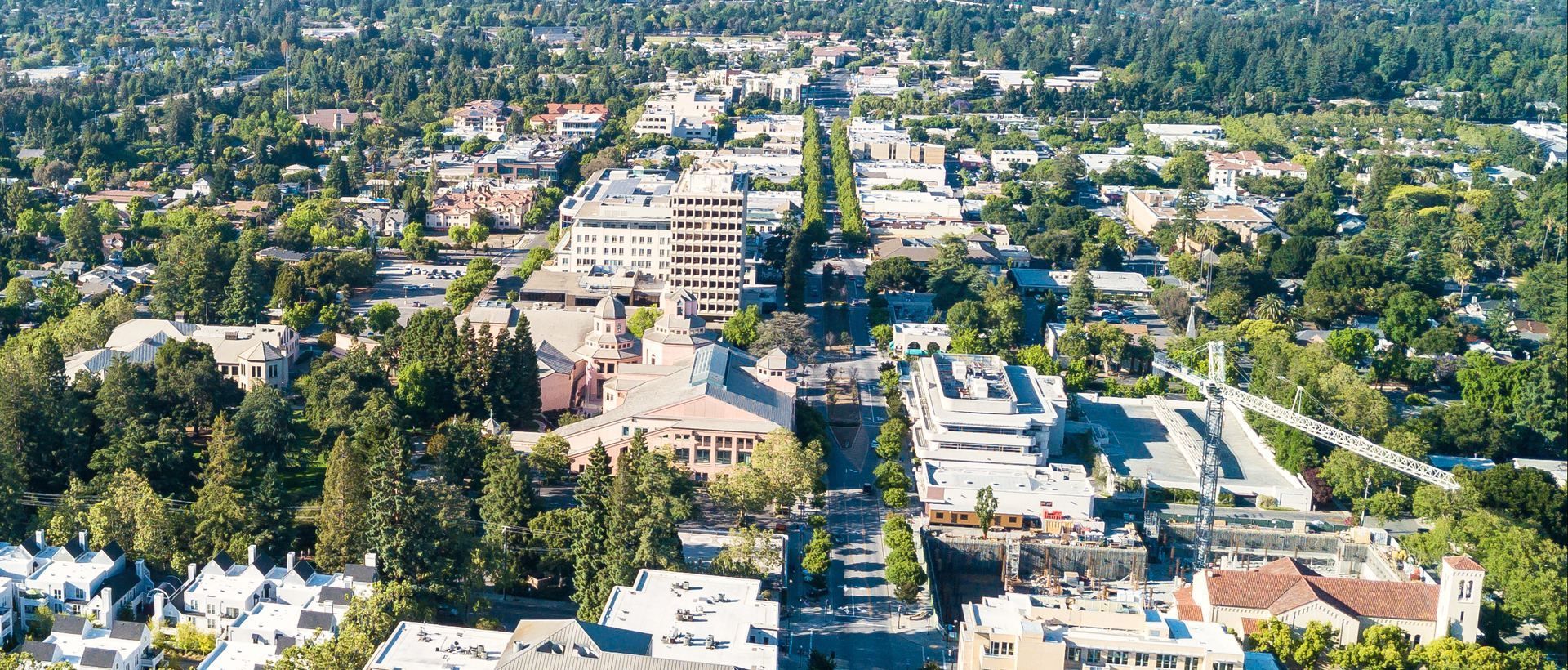Early Origins and Founding:
Mountain View began as part of the Mexican land grant Rancho Pastoria de las Borregas in the early 1800s. In the 1840s, pioneers like Francisco Estrada and later Martin Murphy Jr. (who also helped shape Sunnyvale) began developing the fertile valley lands.
The city got its name from the sweeping views of the
Santa Cruz Mountains, a reminder of its rural roots when orchards, vineyards, and farms stretched across the valley floor. By the mid-19th century, Mountain View became a bustling stagecoach stop along the route between San Francisco and San Jose.
Growth & Transformation:
-Railroad Arrival (1860s): The arrival of the Southern Pacific Railroad transformed Mountain View into a hub for shipping fruit, vegetables, and wine. Canneries and packing companies soon followed.
-Incorporation (1902): Mountain View was officially incorporated as a city, with a modest population that lived largely off agriculture.
-Military & Tech Shifts (mid-20th century): The establishment of Moffett Field Naval Air Station in the 1930s brought federal investment and jobs. Later, the arrival of the NASA Ames Research Center (1939) attracted scientists, engineers, and laid the groundwork for the city’s high-tech identity.
-Silicon Valley Boom (1950s–present): Semiconductor companies began moving in during the 1950s, followed by software firms and eventually tech giants. Most notably, Google’s headquarters—Googleplex—now sits in Mountain View, cementing the city’s place at the center of the digital world.
Fun Facts About Mountain View:
-Home of the First Silicon Valley Startup: Shockley Semiconductor Laboratory, founded in 1956, was the first semiconductor company in the area and earned Mountain View a place in history as the “birthplace of Silicon Valley.”
-Castro Street Charm: Downtown’s Castro Street has transformed from a small farming town main street into a diverse dining and cultural destination.
-Music Legacy: Mountain View is home to the Shoreline Amphitheatre, one of the Bay Area’s most famous outdoor concert venues. It was built in the 1980s on reclaimed landfill near the Bay and has hosted legendary performances.
-NASA Ties: The
Hangar One at Moffett Field is one of the world’s largest freestanding structures and a symbol of the city’s aerospace history.
Distinctive Landmarks:
-Computer History Museum: Located in Mountain View, it’s a global destination for tech enthusiasts who want to trace computing from its earliest machines to AI.
-Googleplex: Not just a workplace, but a cultural symbol of innovation, often drawing visitors hoping to glimpse Google’s quirky campus bikes and sculptures.
-Historic Homes & Districts: Mountain View’s residential neighborhoods include charming Craftsman bungalows, mid-century modern designs, and updated ranch-style homes that reflect the city’s evolution.
Why History Matters in Real Estate for Mountain View:
Mountain View’s real estate market is shaped by its history:
-Tech Economy Impact: From Shockley to Google, the city’s tech leadership drives steady housing demand, keeping property values resilient.
-Neighborhood Identity: Areas like the Old Mountain View District retain historic charm with walkable streets and older homes that contrast with modern developments.
-Cultural Appeal: Buyers are drawn not only to job proximity but also to the city’s layered history—from orchards to semiconductors—that gives Mountain View its unique character.
-Investment Value: Historical significance and tech innovation combine to make Mountain View one of the most competitive and attractive real estate markets in Silicon Valley.


